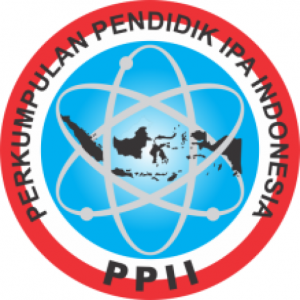Classification and Mapping of Mangrove Biodiversity as a Bioindicator of Environmental Degradation
Authors
Harry Irawan JohariDOI:
10.29303/jbt.v25i4b.10310Published:
2025-11-01Issue:
Vol. 25 No. 4b (2025): Special IssueKeywords:
Basal area, Environmental bioindicators, Mangroves, Stand structureArticles
Downloads
How to Cite
Downloads
Metrics
Abstract
Mangrove ecosystems function as buffers against coastal abrasion, blue-carbon sinks, and habitats for coastal biota; their structural condition can be read as a bioindicator of environmental degradation. This study portrays the condition of mangroves in Lembar, West Lombok by analyzing station-level summaries (Stations I–III) using a descriptive–comparative approach to the number (Σ) of units per stratum (trees–poles–seedlings), aggregate basal area (units following the summary sheet), and species composition. The data were processed directly from the worksheet (February 2025) without normalization to m²/ha or calculation of diversity indices due to the absence of plot area and per-individual data. The results show Station II had the highest counts of trees (91) and poles (49) with seedlings (26); Station I was slightly lower (trees 90; poles 46; seedlings 31); and Station III was the lowest (trees 25; poles 22; seedlings 14). The aggregate basal-area pattern per stratum is consistent and confirms the dominance of stand structure at Station II. The composition of five species is consistent across all stations Avicennia marina, Rhizophora stylosa, R. mucronata, R. apiculata, and Sonneratia alba indicating a functioning microhabitat gradient. The discussion interprets structural indicators (Σ and basal area) as simple bioindicators: Station II reflects a lower risk of degradation, Station I an intermediate risk, and Station III a higher risk. Stand structure and species composition are effective operational bioindicators for setting management priorities—Station III as a target for intervention (pressure reduction/rehabilitation), Station II to be maintained through protection and monitoring, and Station I to be managed adaptively; going forward, normalizing basal area to m²/ha, computing H′/J′, and measuring pressure parameters are needed to strengthen comparability.
References
Arceo-Carranza, D., Chiappa-Carrara, X., Chávez López, R., & Yáñez Arenas, C. (2021). Mangroves as Feeding and Breeding Grounds. In Mangroves: Ecology, Biodiversity and Management (pp. 63–95). Springer Nature. https://doi.org/10.1007/978-981-16-2494-0_3
Arnan, X., Leal, I. R., Tabarelli, M., Andrade, J. F., Barros, M. F., Câmara, T., Jamelli, D., Knoechelmann, C. M., Menezes, T. G. C., Menezes, A. G. S., Oliveira, F. M. P., de Paula, A. S., Pereira, S. C., Rito, K. F., Sfair, J. C., Siqueira, F. F. S., Souza, D. G., Specht, M. J., Vieira, L. A., … Andersen, A. N. (2018). A framework for deriving measures of chronic anthropogenic disturbance: Surrogate, direct, single and multi-metric indices in Brazilian Caatinga. Ecological Indicators, 94, 274–282. https://doi.org/10.1016/j.ecolind.2018.07.001
Ashraf, M., Muhammad, F., Hidayat, J. W., Yaseen, M., Ayyaz, M., Ahmed, W., Anwar, M. S., & Ahmed, K. (2023). Comparison of salinity tolerance between Avicenna marina and Rhizophora mucronata Karachi coast, Pakistan. Journal of Bioresources and Environmental Sciences, 2(3), 89–99. https://doi.org/10.14710/jbes.2023.19306
Bakhtiyari, M., Lee, S. Y., & Warnken, J. (2019). Seeing the forest as well as the trees: An expert opinion approach to identifying holistic condition indicators for mangrove ecosystems. Estuarine, Coastal and Shelf Science, 222, 183–194. https://doi.org/10.1016/j.ecss.2019.03.003
Cahya Ningsih, A. P., Deanova, A. K., Pristiawati, C. M., Ulumuddin, Y. I., Kusumawati, L., & Setyawan, A. D. (2022). Review: Causes and impacts of anthropogenic activities on mangrove deforestation and degradation in Indonesia. International Journal of Bonorowo Wetlands, 12(1). https://doi.org/10.13057/bonorowo/w120102
Chowdhury, R., Sutradhar, T., Begam, M. M., Mukherjee, C., Chatterjee, K., Basak, S. K., & Ray, K. (2019). Effects of nutrient limitation, salinity increase, and associated stressors on mangrove forest cover, structure, and zonation across Indian Sundarbans. Hydrobiologia, 842(1), 191–217. https://doi.org/10.1007/s10750-019-04036-9
da Rosa, G. B., Follmann, D. N., Lúcio, A. D., Jacques, R. J. S., Portela, V. O., & Marchioro, V. S. (2025). Evaluation of soil fauna diversity in maize crops using Shannon, Margalef, and Pielou indices. Acta Scientiarum - Agronomy, 47(1). https://doi.org/10.4025/actasciagron.v47i1.69432
de Lacerda, L. D., Ward, R. D., Godoy, M. D. P., Meireles, A. J. de A., Borges, R., & Ferreira, A. C. (2021). 20-years cumulative impact from shrimp farming on mangroves of northeast brazil. In Frontiers in Forests and Global Change (Vol. 4). Frontiers Media S.A. https://doi.org/10.3389/ffgc.2021.653096
Deng, J., Cullen, J. L. T., Xue, Y., Zhou, F., & Shi, B. (2023). Spatial-temporal analysis of coal fire risk identification and suppression assessment with satellite time series mapping 2013-2020 in Midong coalfield, Xinjiang, China. International Journal of Remote Sensing, 44(7), 2236–2272. https://doi.org/10.1080/01431161.2023.2197133
Fijanry Tammu, Irwanto Irwanto, & Yulianus D Komul. (2025). Vegetation Analysis of Beach Forest in Kamarian Village, Kairatu District, Western Seram Regency, Maluku. International Journal of Applied and Advanced Multidisciplinary Research, 3(5), 297–318. https://doi.org/10.59890/ijaamr.v3i5.11
Gilby, B. L., Olds, A. D., Brown, C. J., Connolly, R. M., Henderson, C. J., Maxwell, P. S., & Schlacher, T. A. (2021). Applying systematic conservation planning to improve the allocation of restoration actions at multiple spatial scales. Restoration Ecology, 29(5). https://doi.org/10.1111/rec.13403
Goldberg, L., Lagomasino, D., Thomas, N., & Fatoyinbo, T. (2020). Global declines in human-driven mangrove loss. Global Change Biology, 26(10), 5844–5855. https://doi.org/10.1111/gcb.15275
Haseeba, K. P., Aboobacker, V. M., Vethamony, P., & Al-Khayat, J. A. (2025). Significance of Avicennia Marina in the Arabian Gulf Environment: A Review. Wetlands, 45(1). https://doi.org/10.1007/s13157-025-01899-8
Hughes, A. R., Cebrian, J., Heck, K., Goff, J., Hanley, T. C., Scheffel, W., & Zerebecki, R. A. (2018). Effects of oil exposure, plant species composition, and plant genotypic diversity on salt marsh and mangrove assemblages. Ecosphere, 9(4). https://doi.org/10.1002/ecs2.2207
Jactel, H., Bauhus, J., Boberg, J., Bonal, D., Castagneyrol, B., Gardiner, B., Gonzalez-Olabarria, J. R., Koricheva, J., Meurisse, N., & Brockerhoff, E. G. (2017). Tree Diversity Drives Forest Stand Resistance to Natural Disturbances. In Current Forestry Reports (Vol. 3, Issue 3, pp. 223–243). Springer International Publishing. https://doi.org/10.1007/s40725-017-0064-1
Kauffman, J. B., Adame, M. F., Arifanti, V. B., Schile-Beers, L. M., Bernardino, A. F., Bhomia, R. K., Donato, D. C., Feller, I. C., Ferreira, T. O., Jesus Garcia, M. del C., MacKenzie, R. A., Megonigal, J. P., Murdiyarso, D., Simpson, L., & Hernández Trejo, H. (2020). Total ecosystem carbon stocks of mangroves across broad global environmental and physical gradients. Ecological Monographs, 90(2). https://doi.org/10.1002/ecm.1405
Kazemi, A., Castillo, L., & Curet, O. M. (2021). Mangrove roots model suggest an optimal porosity to prevent erosion. Scientific Reports, 11(1). https://doi.org/10.1038/s41598-021-88119-5
Lakhnarayan Kumar Bhagarathi, & Phillip N. B. DaSilva. (2024). Impacts and implications of anthropogenic activities on mangrove forests: A review. Magna Scientia Advanced Research and Reviews, 11(1), 040–059. https://doi.org/10.30574/msarr.2024.11.1.0074
Lindenmayer, D. B., & Laurance, W. F. (2017). The ecology, distribution, conservation and management of large old trees. Biological Reviews, 92(3), 1434–1458. https://doi.org/10.1111/brv.12290
Mahmud, S., Redowan, M., Ahmed, R., Khan, A. A., & Rahman, M. M. (2022). Phenology-based classification of Sentinel-2 data to detect coastal mangroves. Geocarto International, 37(26), 14335–14354. https://doi.org/10.1080/10106049.2022.2087754
Maimaitijiang, M., Sagan, V., Sidike, P., Daloye, A. M., Erkbol, H., & Fritschi, F. B. (2020). Crop monitoring using satellite/UAV data fusion and machine learning. Remote Sensing, 12(9). https://doi.org/10.3390/RS12091357
Maina, J. M., Bosire, J. O., Kairo, J. G., Bandeira, S. O., Mangora, M. M., Macamo, C., Ralison, H., & Majambo, G. (2021). Identifying global and local drivers of change in mangrove cover and the implications for management. Global Ecology and Biogeography, 30(10), 2057–2069. https://doi.org/10.1111/geb.13368
Nurhidayah, L., Davies, P., Alam, S., Saintilan, N., & Triyanti, A. (2022). Responding to sea level rise: challenges and opportunities to govern coastal adaptation strategies in Indonesia. Maritime Studies, 21(3), 339–352. https://doi.org/10.1007/s40152-022-00274-1
Nuyts, S., Wartman, M., Macreadie, P. I., & Costa, M. D. P. (2024). Mapping tidal restrictions to support blue carbon restoration. Science of the Total Environment, 949. https://doi.org/10.1016/j.scitotenv.2024.175085
Ozturk, M., Altay, V., Nazish, M., Ahmad, M., & Zafar, M. (2023). Halophyte Plant Diversity and Public Health. In Halophyte Plant Diversity and Public Health. Springer International Publishing. https://doi.org/10.1007/978-3-031-21944-3
Sidik, F., Supriyanto, B., Krisnawati, H., & Muttaqin, M. Z. (2018). Mangrove conservation for climate change mitigation in Indonesia. In Wiley Interdisciplinary Reviews: Climate Change (Vol. 9, Issue 5). Wiley-Blackwell. https://doi.org/10.1002/wcc.529
Susilowati, A., Elfiati, D., Rachmat, H. H., Yulita, K. S., Hadi, A. N., Kusuma, Y. S., & Batu, S. A. L. (2020). Vegetation structure and floristic composition of tree species in the habitat of scaphium macropodum in Gunung Leuser National Park, Sumatra, Indonesia. Biodiversitas, 21(7), 3025–3033. https://doi.org/10.13057/biodiv/d210720
Torres, G. G., Figueroa-Galvis, I., Muñoz-García, A., Polanía, J., & Vanegas, J. (2019). Potential bacterial bioindicators of urban pollution in mangroves. Environmental Pollution, 255. https://doi.org/10.1016/j.envpol.2019.113293
Trialfhianty, T. I., Muharram, F. W., Suadi, Quinn, C. H., & Beger, M. (2022). Spatial multi-criteria analysis to capture socio-economic factors in mangrove conservation. Marine Policy, 141. https://doi.org/10.1016/j.marpol.2022.105094
Uddin, M. M., Abdul Aziz, A., & Lovelock, C. E. (2023). Importance of mangrove plantations for climate change mitigation in Bangladesh. Global Change Biology, 29(12), 3331–3346. https://doi.org/10.1111/gcb.16674
Vu, A. D., Nguyen, K. V., Bui, B. Q., & Kamel, N. (2025). A Comprehensive Survey of Super-Resolution Remote Sensing Image Datasets: Evolution, Challenges, and Future Directions. In IEEE Access. Institute of Electrical and Electronics Engineers Inc. https://doi.org/10.1109/ACCESS.2025.3599535
Wale, M., & Yesuf, S. (2022). Abundance and diversity of soil arthropods in disturbed and undisturbed ecosystem in Western Amhara, Ethiopia. International Journal of Tropical Insect Science, 42(1), 767–781. https://doi.org/10.1007/s42690-021-00600-w
Xu, M., Huang, X., Li, J., Qi, S., Zhang, Y., & Zhang, X. (2025). Assessing the ecological risk and its driving forces on Islands using the Pressure-State-Response model. Scientific Reports, 15(1). https://doi.org/10.1038/s41598-025-08963-7
Zhang, B., Zhang, L., Chen, B., Deng, L., Fu, B., Yan, M., & Ji, C. (2024). Assessment of mangrove health based on pressure–state–response framework in Guangxi Beibu Gulf, China. Ecological Indicators, 167. https://doi.org/10.1016/j.ecolind.2024.112685
Zhang, T. Q., Zheng, Z. M., Lal, R., Lin, Z. Q., Sharpley, A. N., Shober, A. L., Smith, D., Tan, C. S., & Van Cappellen, P. (2018). Environmental Indicator Principium with Case References to Agricultural Soil, Water, and Air Quality and Model‐Derived Indicators. Journal of Environmental Quality, 47(2), 191–202. https://doi.org/10.2134/jeq2017.10.0398
Zhu, X., & Helmer, E. H. (2018). An automatic method for screening clouds and cloud shadows in optical satellite image time series in cloudy regions. Remote Sensing of Environment, 214, 135–153. https://doi.org/10.1016/j.rse.2018.05.024
License
Copyright (c) 2025 Harry Irawan Johari

This work is licensed under a Creative Commons Attribution 4.0 International License.

Jurnal Biologi Tropis is licensed under a Creative Commons Attribution 4.0 International License.
The copyright of the received article shall be assigned to the author as the owner of the paper. The intended copyright includes the right to publish the article in various forms (including reprints). The journal maintains the publishing rights to the published articles.
Authors are permitted to disseminate published articles by sharing the link/DOI of the article at the journal. Authors are allowed to use their articles for any legal purposes deemed necessary without written permission from the journal with an acknowledgment of initial publication to this journal.

























